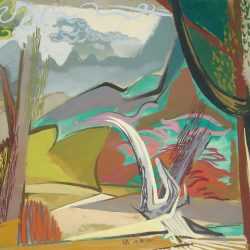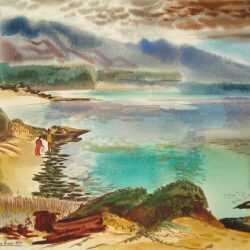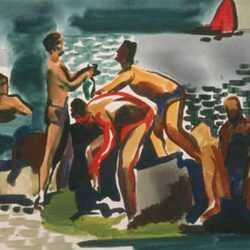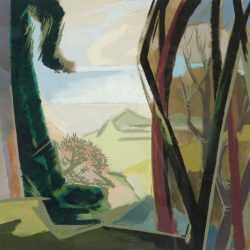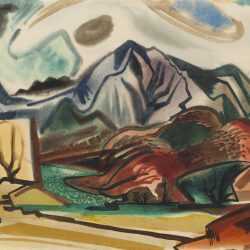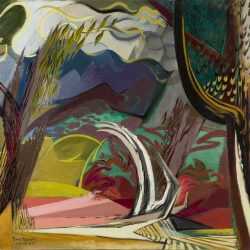Filter by Type
Filter by Category
Filter by Size
Filter by Year
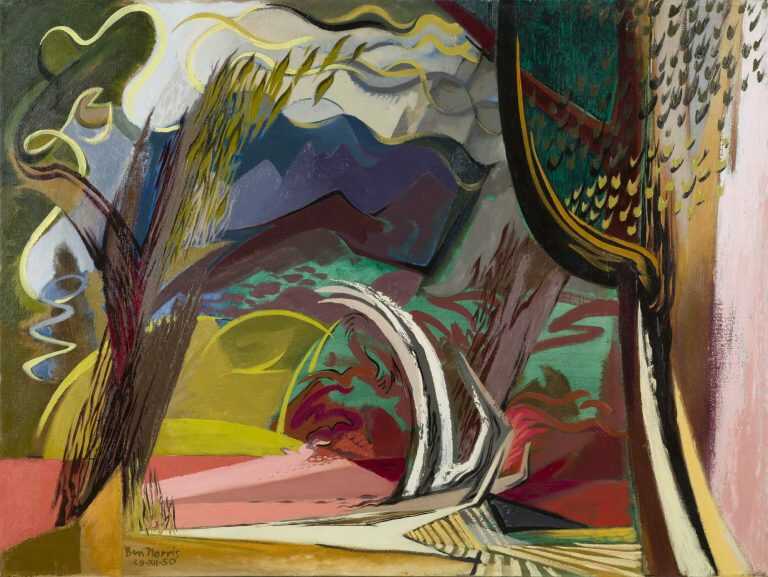
Ben Norris
American (1910-2006)
Robert Benjamin Norris was born in 1910 in southern California, where he completed his undergraduate education, executed his first professional paintings, and first exhibited to critical acclaim. Although he continued to paint for 20 years after retiring to New York City and Philadelphia, he may be best known in Hawaii, where he spent the highly prolific middle part of his professional career.
Norris has long been identified with the Southern California Watercolor School, which includes his colleagues, Phil Dike, Thomas Craig, Millard Sheets, Milford Zornes and Hardie Gramatky. Although he moved to Hawaii in 1936, he often returned to paint in southern California through the late 1940s and his style remained essentially that of the Southern California Watercolor School through that time.
Norris studied at Pomona College, Harvard, and the Sorbonne, but supplemented his schooling by working directly with Stanton Macdonald-Wright, Jean Charlot, Josef Albers and Max Ernst. When the University of Hawaii resumed classes after World War II, Norris became Chairman of the Art Department and seized the opportunity to invite distinguished artists as visiting professors or artists-in-residence. Ernst exerted an especially potent influence, about which Norris later wrote: “I had invited him to the University. He was both charming and accessible to us, giving me a chance to hear and to understand some authentic ‘info’ about Surrealism. I eventually merged some of the conventional Surrealist forms of automatic painting with Far Eastern paper handling techniques.” Ben Norris’ abstract interpretations of the Hawaiian landscape Wind from the Sea I and The Pali, exhibited at the Metropolitan Museum of Art in 1950, were painted during this decade of artistic exploration.
As a teacher, academic, and artist, Norris had an unquenchable thirst for knowledge and continued to master new stylistic methods throughout his career. While well known for his bold watercolors, Norris also became an accomplished printmaker, and experienced much success with his oil and acrylic paintings, as well as his collages. His varied work always seems to imbue a mystical or spiritual aspect, which Norris spoke of in a 1965 interview for Art in America:
“The act of painting is a combination of apprehension of the environment in which we live with the affirmation and the consolidation of the self within this setting. My home-grown Zen is hybridized from Max Ernst’s surrealism, a number of contacts with psychiatry (the healing priesthood of our time), and the Religious Society of Friends, called Quakers.”
Norris exhibited steadily from 1933 through 2001 in solo and group exhibitions, and garnered many awards including a Fulbright Professorship and a Yaddo Fellowship. He is represented in many permanent collections including the Honolulu Academy of Arts, the Honolulu Museum of Art, the Hawaii State Art Museum, The Smithsonian American Art Museum (Washington, D.C), the McNay Art Museum (San Antonio, Texas), the Oregon State University Memorial Union (Corvallis, Oregon), and the National Museum of American Art. His work has been exhibited nationally at museums across the country including the Metropolitan Museum of Art, the Whitney Museum of American Art, the New York Public Library, the Art Institute of Chicago, the Pennsylvania Academy of Fine Arts, the deYoung Museum in San Francisco, and the Los Angeles Museum. Childs Gallery is proud to have represented this prolific and talented artist since 1998.


![Watercolor By Ben Norris: Boys On Rocks #2 [hawaii] At Childs Gallery](https://childsgallery.com/wp-content/uploads/ben_norris_boys_on_rocks_2_hawaii_98-19-b0127ps92-42-270-13_childs_gallery-250x250.jpg)
